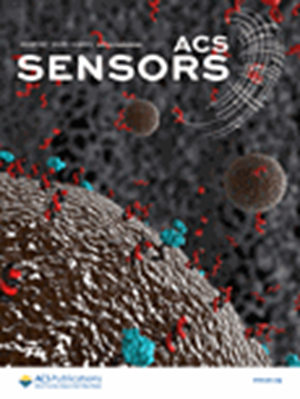Smart Breath Sentinel: A NO2 Gas Sensor with ppt-Level Detection Lower Limit and High Signal-to-Noise Ratio Based on In(OH)3-α-Fe2O3–ZnO for an Application on Intelligent Upgrade of Ordinary Masks
IF 9.1
1区 化学
Q1 CHEMISTRY, ANALYTICAL
引用次数: 0
Abstract
Nitrogen dioxide (NO2), the main component of pollutants in atmospheric environments, causes and exacerbates respiratory diseases, especially during outdoor sports even at the 100 ppb level. Currently, environmental gas detection still faces challenges such as high detection limits, low SNR, and low sensitivity. A NO2 sensor based on In(OH)3-α-Fe2O3–ZnO was prepared using a hydrothermal method, featuring an ultralow detection limit of 82 ppt, an exceptionally high SNR of 574,000, and an ultrahigh sensitivity of 252.25 mV/ppm (100 ppb to 1 ppm). And this sensor exhibits excellent response, selectivity, and repeatability. These excellent sensing characteristics come from the adsorbed oxygen on the surface of the material with the formation of n–n heterojunctions. Additionally, a low-power, portable, and cost-effective environmental monitoring system (named Smart Breath Sentinel (SBS)) was designed to intelligently upgrade ordinary masks. SBS enables real-time wireless environmental gas monitoring with integrated humidity compensation to ensure accurate measurements in high-humidity environments. SBS has already been tested in multiple environments, and the test results have proven the feasibility of SBS. This sensor based on In(OH)3-α-Fe2O3–ZnO demonstrates significant potential for applications aimed at enhancing human safety.

智能呼吸哨兵:基于 In(OH)3-α-Fe2O3-ZnO 的具有ppt 级检测下限和高信噪比的 NO2 气体传感器在普通口罩智能升级中的应用
二氧化氮(NO2)是大气环境中污染物的主要成分,即使在100 ppb水平的户外运动中也会引起和加剧呼吸系统疾病。目前,环境气体检测仍然面临着检测限高、信噪比低、灵敏度低等挑战。采用水热法制备了基于In(OH)3 -α-Fe2O3-ZnO的NO2传感器,超低检出限为82 ppt,超高信噪比为574,000,超高灵敏度为252.25 mV/ppm (100 ppb ~ 1 ppm)。该传感器具有良好的响应、选择性和可重复性。这些优异的传感特性来自于氧吸附在材料表面形成的n-n异质结。此外,设计了一种低功耗、便携式、经济高效的环境监测系统(名为智能呼吸哨兵(SBS)),用于智能升级普通口罩。SBS支持实时无线环境气体监测,具有集成的湿度补偿,以确保在高湿环境中进行准确测量。SBS已经在多个环境中进行了测试,测试结果证明了SBS的可行性。这种基于In(OH)3 -α-Fe2O3-ZnO的传感器在提高人体安全方面具有重要的应用潜力。
本文章由计算机程序翻译,如有差异,请以英文原文为准。
求助全文
约1分钟内获得全文
求助全文
来源期刊

ACS Sensors
Chemical Engineering-Bioengineering
CiteScore
14.50
自引率
3.40%
发文量
372
期刊介绍:
ACS Sensors is a peer-reviewed research journal that focuses on the dissemination of new and original knowledge in the field of sensor science, particularly those that selectively sense chemical or biological species or processes. The journal covers a broad range of topics, including but not limited to biosensors, chemical sensors, gas sensors, intracellular sensors, single molecule sensors, cell chips, and microfluidic devices. It aims to publish articles that address conceptual advances in sensing technology applicable to various types of analytes or application papers that report on the use of existing sensing concepts in new ways or for new analytes.
 求助内容:
求助内容: 应助结果提醒方式:
应助结果提醒方式:


